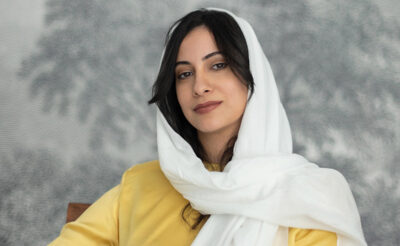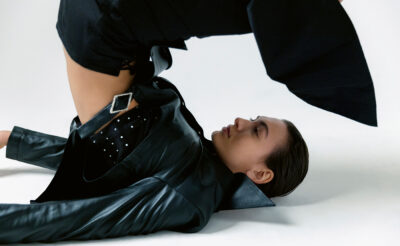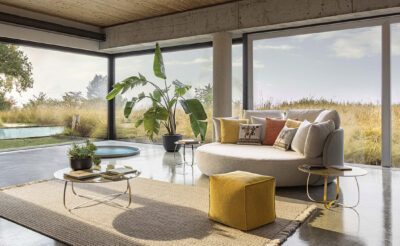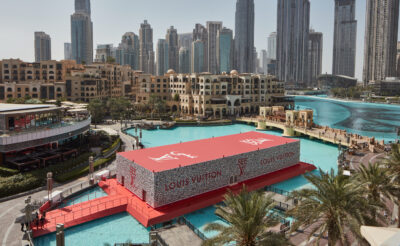Head to Saudi’s historical and spectacular AlUla for an otherworldly art experience
Ten years ago Raneem Farsi founded Raneem Farsi Art Advisory – now AR Art Advisory – with Aya Alireza. Together they serve as a multidisciplinary art consultancy bolstering the art scene in Saudi Arabia and its representation abroad. Curating shows together since 2013, their latest project Desert X AlUla marries art, culture and environment in the most unexpected and awe-inspiring way.
The exhibition is a cross-cultural dialogue between artists and the stunning surrounds. Fourteen large-scale site-specific works respond to ALUla’s unique environmental conditions, historical context and surrounding communities. Saudi curator Raneem tells us everything we need to know…
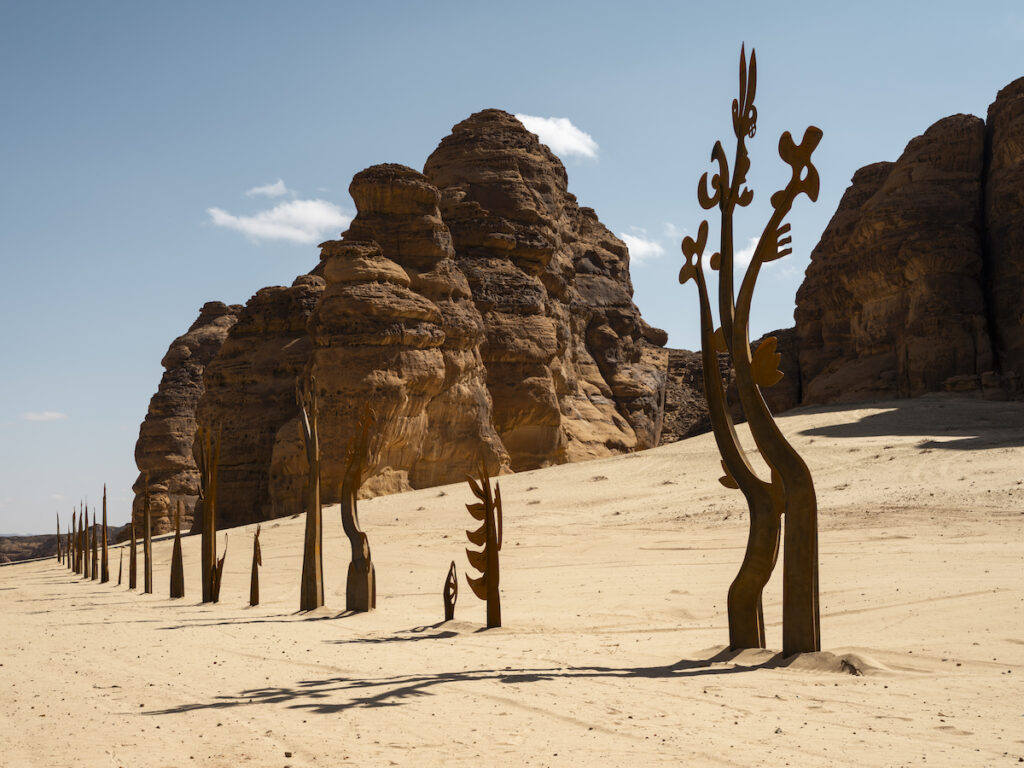
Nadim Karam, On Parade, installation view at Desert X AlUla, photo Lance Gerber, courtesy the artist, RCU and Desert X
Can you talk us through the concept of Desert X AlUla?
An exploration of desert culture, the exhibition is a cross-cultural dialogue between artists from previous iterations of Desert X, California, Saudi Arabia and its surrounding region, taking its cues from the extraordinary landscape and historical significance of AlUla.
Many of the participating artists are informed by the multiple layers of history shaping the region and were invited for a visit that summarised the best brief possible for this exhibition; the landscape itself. Their work reflects on pertinent themes and concepts that explore wide horizons, challenging the traditional definition of art. Alongside the international and regional artists on view, this exhibition is a debut of what Saudi Artists have to offer, allowing the artworks to speak for themselves beyond the label of origin.
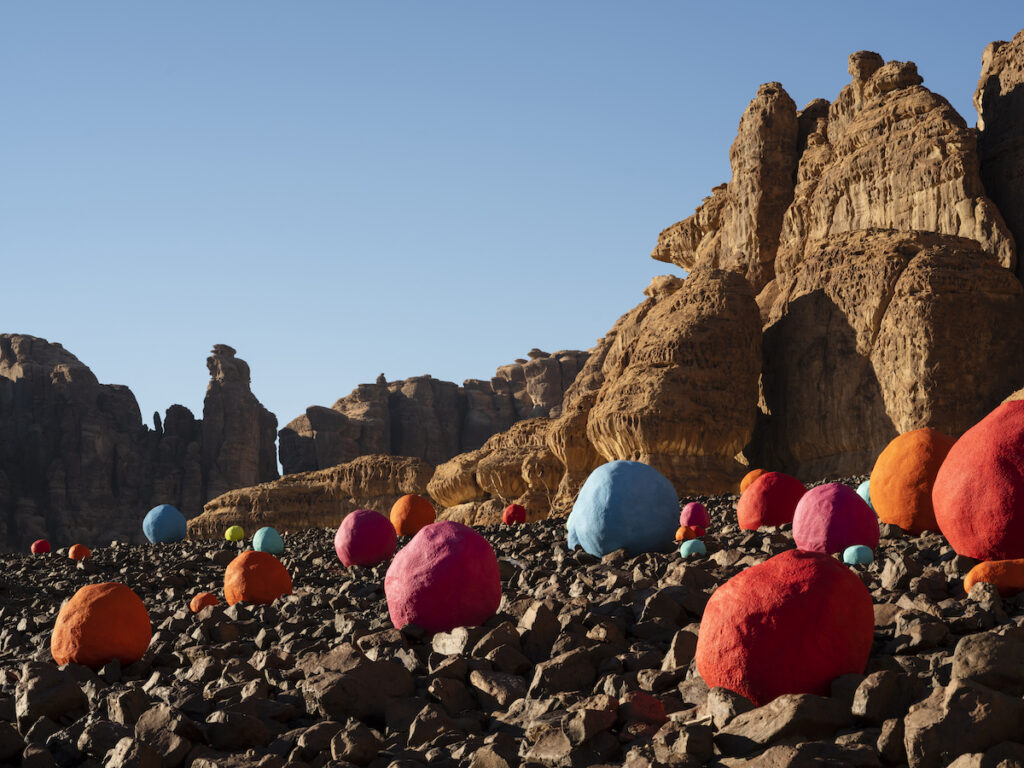
Mohammed Ahmed Ibrahim, Falling Stones Garden, installation view at Desert X AlUla, photo by Lance Gerber, courtesy the artist and Lawrie Shabibi, RCU and Desert X
What exactly is involved in curating an exhibition?
Curating an exhibition is not an easy task at all, as it requires full dedication to every detail that goes into the exhibition. It involves immense research, concept development, artists selection, artwork production or selection with regards to location, maintenance, programs, and ensuring audience experience and engagement, alongside other parts such as the write ups for the exhibition itself and its publication.
Working collaboratively alongside my co-curators Aya Alireza and Neville Wakefield, we commissioned 14 contemporary artists to create site-specific installations in the desert of AlUla. My biggest role as a curator was to ensure that there were three parallel dialogues to be held, between artist and landscape, artist and artist, and artist and visitor.
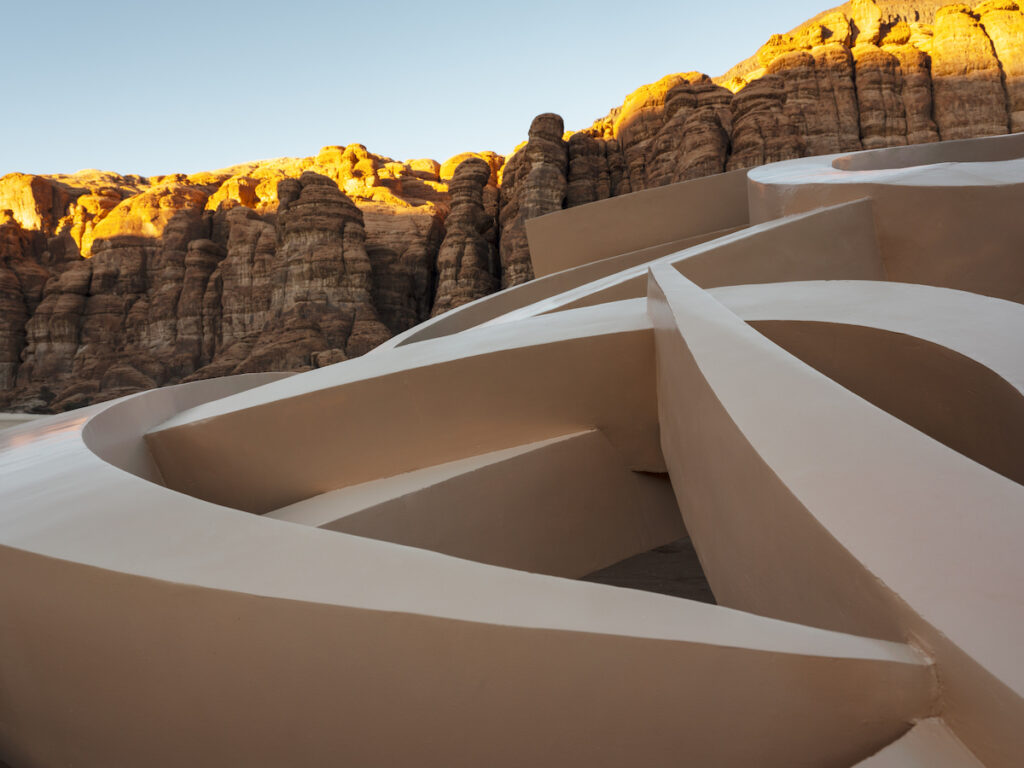
eL Seed, Mirage, installation view at Desert X AlUla, photo by Lance Gerber, courtesy the artist, RCU and Desert X
Were there any challenges working at this ancient site?
The challenge of placing artworks against the natural beauty of AlUla and the fragility of the desert and ecosystem became a force of inspiration for the artists. In my opinion, it’s more a case of respecting the surroundings and its history as opposed to being restricted by it.
The artists worked diligently on integrating their works with the landscape; be that through conceptual connections with the area or utilising nature’s physical forces and exposure to its uncontrolled elements. There were many landscape surveys and sharing of weather condition reports that took place in preparation for this exhibition, all to ensure the safety of the environment and the artwork.
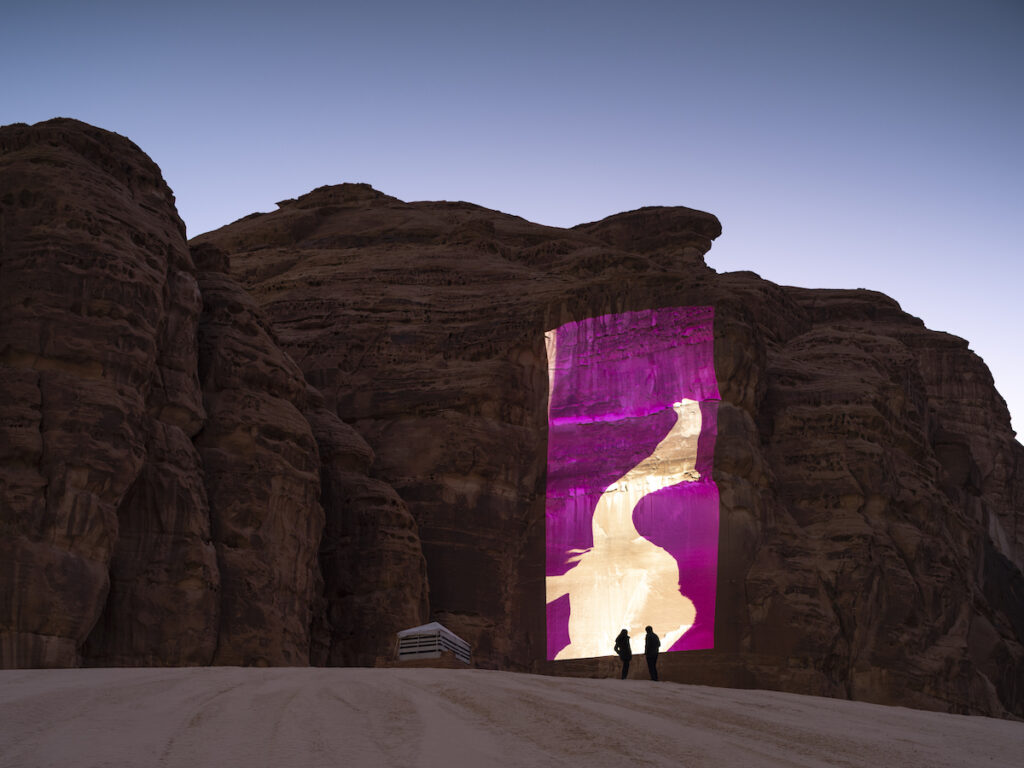
Wael Shawky, Dictums: Manqia II, installation view at Desert X AlUla, photo Lance Gerber, courtesy the artist, RCU and Desert X
How did the location come to host the exhibition?
Artworks become the voices of the area without infringement; a kind of channel of narration across the site. Contemporary installations project the stories we learn about this ancient site from different personal perspectives. Rayyane Tabet, one of Desert X AlUla participating artists once mentioned while talking about installation forms, that a lot of those stories told through sculptures can be broken down to very particular narratives that stem from the personal or a precise experience, the medium of sculpture and the installation form, by spatialising those encounters, allows you, who probably has not gone through any of those experiences or moments to be within them.
And in my opinion that becomes a common denominator between these site-specific installations and ancient ruins in the area. There were of course technicalities involved in the process, and assessment surveys have been carried out by heritage and archaeology specialists to ensure we adhere to the best practice to protect important archaeological and cultural areas.
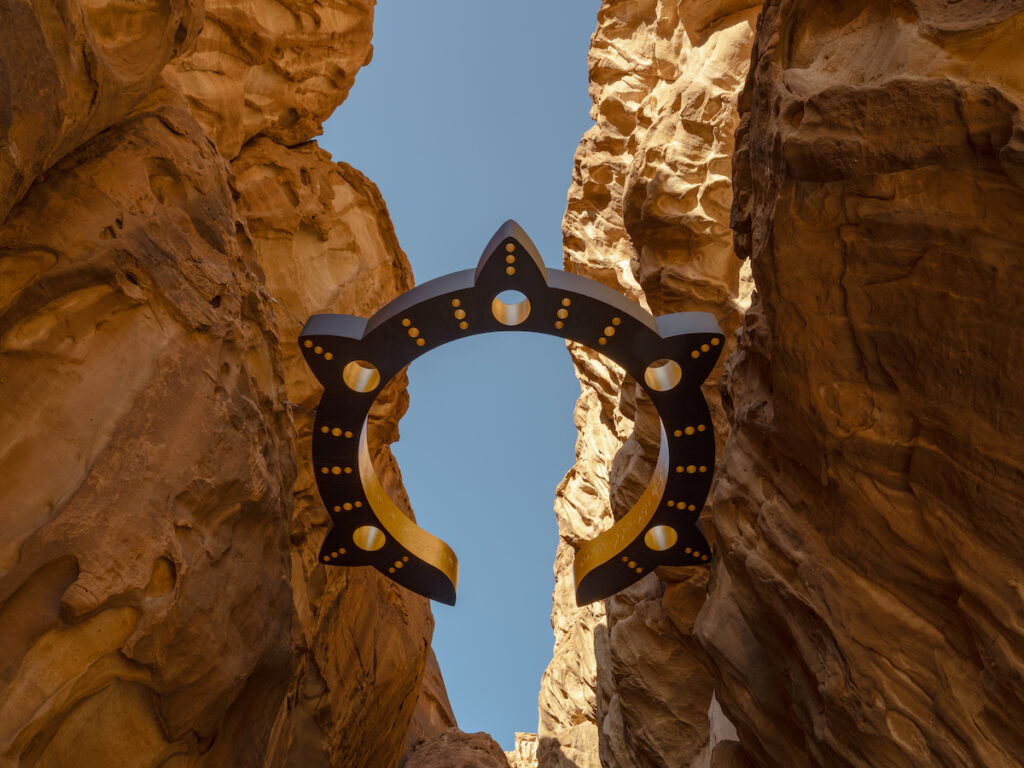
Sherin Guirguis, Kholkhal Aliaa, installation view at Desert X AlUla, photo by Lance Gerber, courtesy the artist, RCU and Desert X
Who are the artists involved?
The artists were selected by the curators working collaboratively. It was important the exhibition recognised Saudi Arabia’s dynamic artists alongside international and regional names, representing a plurality of voices.
Artists were invited to visit AlUla to engage with its environmental conditions, historical context and surrounding communities and then after propose their projections that reflect their inspiration and dialogue with the landscape. Each has its uniqueness and plays a pivotal role in the story of Desert X AlUla.
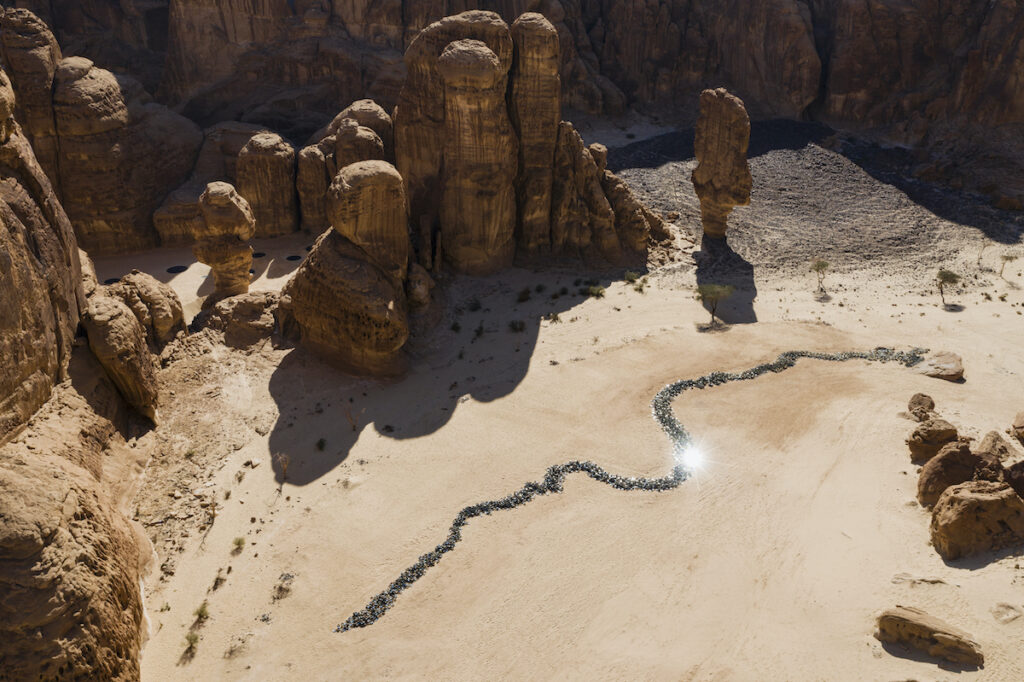
Zahrah AlGhamdi, Glimpses of the Past, installation view at Desert X AlUla, photo by Lance Gerber, courtesy the artist, RCU and Desert X
What is it that you love about the location?
The natural beauty of the landscape with its epic rock formations, ancient sites and civilisations dating back millennia are like nowhere else in the world. To be in a place built from successive civilisations and people including the ancient North Arabian Kingdoms of Dadan and Lihyan, and the Nabataeans, is humbling and breath-taking at once.This place brings out the humility in the individual; you realize your size within the larger space. It allows you to self reflect and wonder, and awakens the curiosity of the mind on the creation of all that’s around you. It raises the appreciation of history like never before.
I’ve been visiting AlUla since 2012, either with guests from abroad to see some historic sites, or with friends on road trips, or even flying our guests of 21,39’s 1st edition for a tour in its beautiful historic sites in 2014. Till today, Every time I’m back I feel overwhelmed; I’m blown away, I become at loss of words to express my feelings.
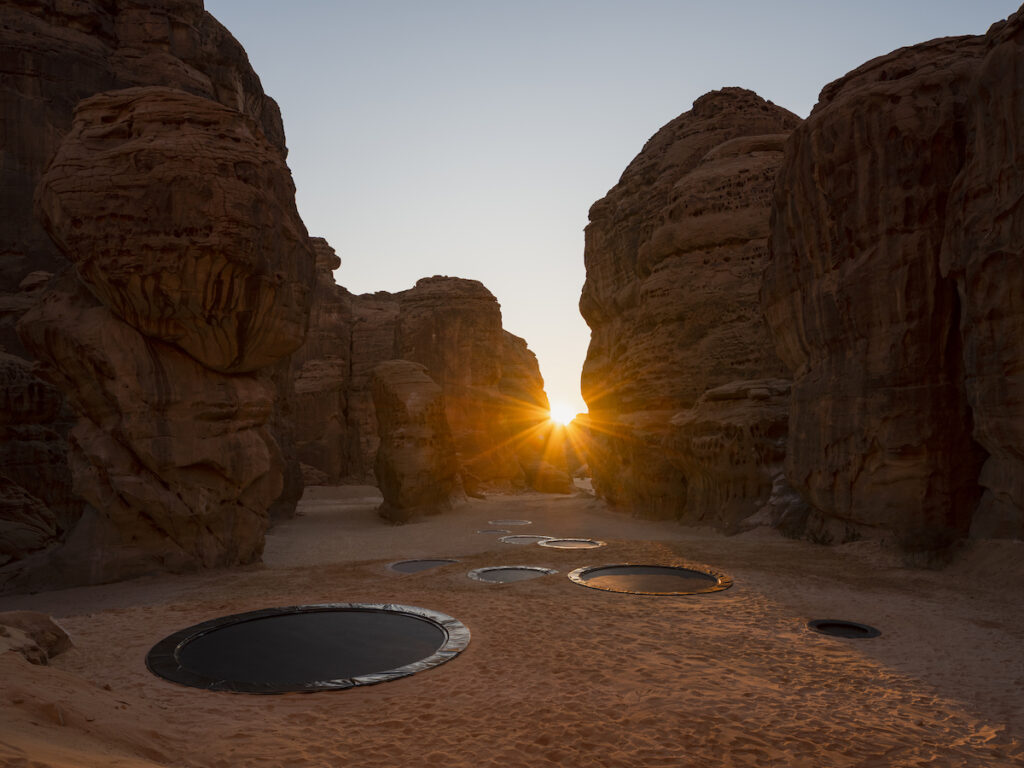
Manal AlDowayan, Now You See Me, Now You Don’t, installation view at Desert X AlUla, photo by Lance Gerber, courtesy the artist, RCU and Desert X
How will Desert X AlUla inspire visitors?
There is no way to dictate an experience, but my humble hope is simple – I will be happy if the experience is unexpected. I also hope the exhibition inspires visitors to work towards a more inclusive and open future, creating connections based on shared environmental and cultural experiences rather than any boundaries and to understand that art can be about humanity.
Through works that are informed by the multiple layers of history and society shaping the region, I hope preconceived notions about the Middle East are also challenged. I hope this exhibition becomes a true platform for cultural dialogue and exchange, as it is an initiation of that, a call for all.
Desert X AlUla runs until March 7; Desertx.org
